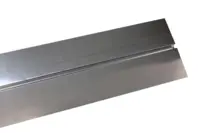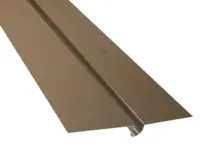- Forside
- Gode råd om gulv
- Konstruktioner
- Specialkonstruktioner
- Højstyrkebelægninger
- Akustikpaneler
- Afpassede tæpper
- Bambusgulve
- Bordplader & bordben
- Designgulve
- Fliser og klinker
- BeefEater gasgrill
- Gode råd om gulv
- Gulvtæpper
- Gulvvarme
- Græstæpper
- Korkgulve
- Køkken, bad & garderobe
- Laminatgulve
- Linoleumsgulve
- Maling, Væv & Spartel
- Måtter
- Møbler & Boliginteriør
- Nålefilt og messetæpper
- Plejeprodukter
- Restpartier & gode tilbud
- Sildebensparket & Stavparket
- Tæppefliser
- Terrassebrædder
- Tilbehør
- Trægulve
- Vareprøver
- Vinylgulv
- Værktøj
- Øvrige produkter
- Loft- og vægpaneler
- Flotte gulve
- Fyrretræsgulv
- Klikgulve
- Bestilte varer
-
-26%
-
Populær29,00 DKK
-
29,00 DKK pr m2
-
Populær21,00 DKK
-
29,00 DKK pr m2
Højstyrkebelægninger
Alle informationer på denne side er kopieret materiale fra Gulvfakta som er et fagteknisk opslagsmateriale, Kilde: Gulvfakta
Højstyrke gulvbelægningen PU-Crete er lavet på basis af polyuretan og er udviklet til at give god modstandsdygtighed mod termiske og kemiske belastninger samt slidtage, kollisioner og andre mekaniske påvirkninger. Gulvbelægningen er meget solid og kan anvendes, når de skrappeste egenskaber er påkrævet.
2.4.1.1 PU-Crete
Alle informationer på denne side er kopieret materiale fra Gulvfakta som er et fagteknisk opslagsmateriale, Kilde: Gulvfakta
2.4.1.1 PU-Crete
Gulvbelægningen er en flerkomponent polyuretan modificeret med specielfiller. Den udføres typisk i lagtykkelser fra 2 - 12 mm. Lagtykkelsen for det valgte gulv afhænger af de ønskede egenskaber, da gulvbelægningen kan udføres med forskellige grader af skridsikkerhed, overflader, farver, finishgrader og modstandsdygtighed. Derudover kan der opnås meget hurtige hærdetider. Der kan udføres PU-Cretegulve, som er fuldt brugbare efter kun fem timer ved temperaturer på min. 10 °C. Gulvbelægningen vælges oftere på grund af sin funktionalitet og modstandsdygtighed end af æstetiske årsager.
Anvendelsesområder
Gulvbelægningen kan være en løsning til fødevareindustrien, mejerier, farmaceutiske og kemiske anlæg, laboratorier, fryserum mv., som er udsat for høje kemiske og mekaniske belastninger, slagpåvirkning, varmechok og damprens osv.
Gulvbelægningen er kompakt, uigennemtrængelig og praktisk talt inaktiv, ikke biologisk nedbrydelig og befordre ikke vækst af bakterier mv., hvilket gør den velegnet til områder, hvor der er behov for det højeste niveau af hygiejne.
Gulvbelægningen er ikke UV-resistent. Det vil sige, at hvis den bliver udsat for sollys eller anden UV-påvirkning, er der risiko for, at visse farver vil gulne.
Vigtigste fordele
• Resistent over for en bred vifte af kemikalier fra stærke syrer til baser, fedtstoffer, olier og opløsningsmidler mv.
• Højere slidstyrke end traditionelle fugefrie belægninger
• Afhængig af specifikation og lagtykkelse kan gulvbelægningen tåle og bevare sine fysiske egenskaber ved temperaturpåvirkninger fra -40 °C op til +160 °C
• På beton kan vedhæftningsstyrken blive stærkere end betonens sammenhængsstyrke
• Smags- og lugtneutral og afgiver ingen forurening eller VOC'er (flygtige organiske forbindelser)
• Mindre fugtsensitiv end lignende produkter og gulvbelægningen kan således udlægges på relativt nystøbt beton efter passende forbehandling
• Kan udføres som antistatisk gulvbelægning
Vurdering af underlag
Et vigtig parameter for et godt resultat er underlaget.
Før arbejdsprocessen igangsættes, skal underlagets beskaffenhed undersøges og kontrolleres omhyggeligt for bl.a. revner, løse områder og om overfladetrækstyrken lever op til den valgte PU-Cretes specifikke krav. For de fleste producenter vil minimumskravet til overfladetrækstyrken på underlaget som regel være ≥ 1,5 MPa. Derudover bør man være opmærksom på, om producenten stiller særlige krav i forbindelse med diverse afslutninger og eventuelle låseriller. Det er vigtigt - og fælles for alle typer gulvbelægninger - at underlaget kontrolleres og lever op til producentens vejledninger inden gulvbelægningen udføres.














